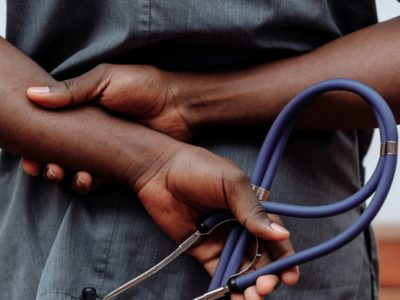Mark Buchanan from Roopville, GA didn’t think he was going to survive the COVID-19 pandemic. He and his entire family came down with a nasty bout of the disease, but no one wound up in the hospital except him. He was on a ventilator, sedated for nearly three months before starting extracorporeal membrane oxygenation (ECMO), a last-resort effort to save patients dying of the disease.
“They said that it had ruined my lungs,” Buchanan said. “The vent and the covid ruined ’em completely.”
However, his luck changed after becoming one of the first people in the U.S. to receive what’s being referred to as a COVID-related transplant. He received a double lung transplant in October at a time when few hospitals were willing to take a chance on the procedure. Now, these kinds of transplants are soaring all over the country.
A Stressful Recovery
The idea of doing a transplant on a COVID-19 patient was virtually unheard of up until the end of last year. At the time, doctors thought it was too risky to put a new set of lungs or heart into a patient who suffered from the disease. They weren’t sure how the virus would affect the new organs or if it would even increase the person’s chances of survival.
According to Mark’s wife, Melissa Buchanan, Emory University Hospital declined his request for an organ transplant after the disease decimated his internal organs. She says the hospital advised her to stop treatment so that her husband could die at home peacefully.
“They were telling me to end his life. I told them absolutely not,” Melissa recalled. “We all started Googling any place that would take someone who needed a lung transplant.”
They spent days searching for a hospital that was willing to perform the procedure. Melissa says Mark finally got accepted into University of Florida Health Shands Hospital, 350 miles away from where they live.
Melissa, who became ill herself, had to devote herself entirely to caring for her husband. “I had to rely solely on God and my family and friends,” she said. “It’s hard to explain how stressful it was.”
Mark Buchanan survived the double transplant and spent another three months recovering at Florida Health Shands Hospital. “I couldn’t brush my teeth or feed myself,” he said. “I had to learn to eat, swallow, talk, walk all over again.”
When he returned home, he was greeted by around 400 friends and neighbors, but not everyone was taking the pandemic seriously.
“People still make a joke of it. But I was in the hospital 170 days. You tell me: Is it real or not?”
The Rise of COVID-Related Transplants
As doctors learn more about how the coronavirus affects the body, COVID-related transplants are soaring in popularity. Two dozen facilities around the country now offer these procedures, with more sites coming online every month. Buchanan was one of 17 patients to receive a transplant at Shands Hospital, the most of any facility in the country.
Nearly 60 COVID-related transplants have been completed nationwide as of March 31st, according to the United Network for Organ Sharing, which oversees transplants in the U.S. That includes 54 lung transplants and four heart transplants.
Dr. David Weill, former director of the Stanford University Medical Center’s lung and heart-lung transplant program, says, “You’re seeing it move around the country, and it’s moving around pretty quick. It’s like wildfire, where centers are saying, ‘We did our first one, too.’”
With over 570,000 COVID deaths across the U.S., more providers seem to be willing to take a chance on an organ transplant.
“I think this is just the beginning. I expect this to be a completely new category of transplant patients,” says Dr. Tae Song, surgical director of the lung transplant program at the University of Chicago Medical Center.
Dr. Weill explains that when it comes to novel diseases like COVID-19, providers need time to study how the disease will affect the success of the procedure. That’s why he’s calling for a national transplant registry to track patient outcomes.
Studies show COVID-related transplants haven’t significantly affected the country’s supply of transplant organs. Of the 107,000 patients on organ waitlists, most people are waiting for kidneys. Just 3,500 people need hearts and 1,000 need lungs.
Providers must analyze a complex series of metrics when deciding who gets an organ transplant. The goal is to evaluate who needs the organ the soonest with the most medically urgent cases going first. That may bump some COVID-19 patients to the top of the list, but it’s not a guarantee.
Not everyone who suffers organ damage as a result of COVID-19 is eligible for a transplant. The virus affects multiple organs in the body, which might affect their chances of survival. Other conditions, such as diabetes, hypertension, and high blood pressure, can affect the person’s chances as well.
Likely candidates are those under the age of 65 who are otherwise healthy and whose organs won’t heal on their own.
Dr. Tiago Machuca, chief of thoracic surgery at UF Health Shands Hospital, has created suggested guidance for determining eligibility for organs. “This is a very different profile of patients. These patients had normal lung function. They’re young, and now they find themselves on mechanical ventilation or ECMO, fighting for their lives.”
It’s not clear who will benefit from these new types of transplants, but Machura says, “Before COVID, transplanting patients with acute respiratory failure was a ‘no’. I think this is expanding the limits of what we felt was possible.”

















